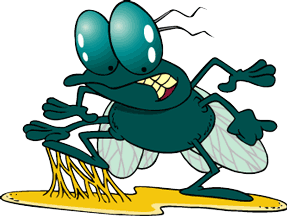
Weekly Gems from Ronda Gates.
 | Weekly Message
Weekly Gems from Ronda Gates. |
|
Have you heard diet book authors say, "it's not fat that's killing us, it's sugar"? They go on to tell us that sugar is sending ourglucoseglucose levels into a tailspin and that we have no energy because we are insulin resistant. They neglect to mention that it's not the sugar itself that is harmful-it's the lifestyle of the people who eat the sugar. People who exercise can, for the most part, ignore the "don't eat this" mantra for any food. The fitter you get the more your body throws off challenges. If you aren't moving at least 10,000 or so steps a day most days of the week your body perceives you to be a slug so everything slows down-including your ability to metabolize excess, empty fat, sugar, and alcohol calories. The body works best when blood sugar falls within a specific range. That range is internally regulated. When added sugar stressed the brain receives an "I'm off kilter" message. The pancreas is told to release sugar into the blood stream so cells can open and absorb and store the excess. In diabetics the pancreas doesn't respond. In an unfit person the pancreas might respond but when the insulin is released and goes to cells that can accept blood sugar they say, "If you aren't going to exercise, I'm not going to work either." Thus the term insulin resistance. If the sugar is part of excess calories they are easily converted to fat and stored in the places you wish were less lumpy. And, even in unfit people who are not very fat excess sugar can trigger a new message that precipitates the release of more insulin which can throw the pendulum the other way so blood sugar levels plummet. Thus the word hypo (low) glycemic (sugar glucose). Regardless it's a mostly diabetic issue-not something that healthy people need to worry about. Yes, we all have some energy highs and lows that may or may not be related to blood glucose levels (studies at OHSU Sleep disorder center are exploring the possibility it may also be a circadian rhythm issue) but we need to remember that to sell a book authors extract what they want from the context of a study or body chemistry, rarely telling us the parameters in which it was based. Despite the chemistry there's a troubling statistic available. When total added sugar consumption is measured against the U. S. population the statistics reveal it comes out to an intake of about 150 pounds per person per year. That's the equivalent of more than 45 teaspoons a day (almost 700 calories). Semantics about sugar and poor product labeling causes much of the confusion about dietary sugar. Savvy marketing people can advertise products as sugar free or no sugar added because there's more than one way to describe the cane sugar originally refined by the Persians in 600 A. D. This includes:
 Next time you go to the store, pick up the packaged goods you're used to throwing in your basket to see if they contain more than one kind of sugar. Then weigh the risk of a high in empty calorie diet (this includes alcohol) against your exercise lifestyle. If you're fit, reward yourself with an occasional treat. But if you're not fit, pick up one of those "don't eat sugar" books. |
| Weekly Messages | Lifestyles |
|
|
1378 Casada Ct, Leisure World Mesa, AZ 85206 Phone: 480-242-4812 |
| Web Site Design by JDL Design | |